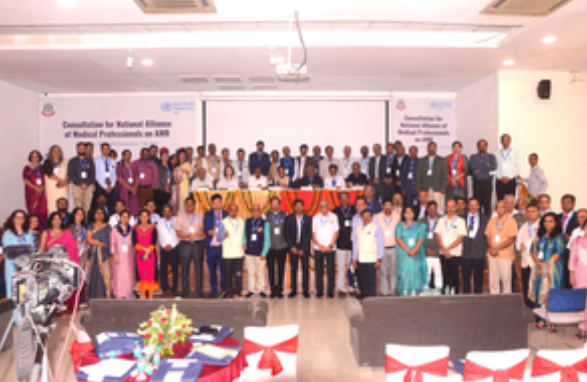Health
IMA's national alliance of medical professionals to take on antimicrobial resistance menace

New Delhi, July 10
In a significant move, the Indian Medical Association (IMA) on Wednesday launched the National Alliance of Medical Professionals on Antimicrobial Resistance (NAMP-AMR) to tackle the menace of Antimicrobial Resistance (AMR).
AMR, also known as drug resistance, is a rapidly increasing threat to human health worldwide. It was directly responsible for 2,97,000 deaths and was associated with 10,42,500 deaths in India in 2019.
“AMR can have a potential impact on Viksit Bharat, including the prosperity, GDP, and various health aspects of the country,” said Dr V.K. Paul from NITI Aayog, at an event held at the IMA headquarters in the national capital.
He noted that the government affirmed its commitment to addressing antimicrobial resistance.
The pioneering initiative by IMA brings together leaders and representatives of 52 medical speciality organisations/associations from across the nation, uniting on a common platform to strategise against this important health crisis.
Applauding IMA's initiative of NAMP-AMR, Dr Paul called it “the right step in the right direction”. He also emphasised the necessity of uniting all organisations under one banner to turn this into a national movement.
"AMR poses a significant threat to the health of our Nation. The formation of NAMP-AMR by the Indian Medical Association marks the beginning of a concerted national effort to tackle this crisis head-on," said Dr Narendra Saini, Chairman of IMA AMR.
The experts noted that enhanced medical education and training are crucial in improving the quality of medical practice. They also highlighted the critical need to understand when and how to use antibiotics effectively.
By starting from the basics and strengthening medical education, healthcare professionals can contribute to better healthcare practices and combat AMR.
Meanwhile, Payden, Deputy Head of WHO India, emphasised the global urgency of addressing AMR and projected it as a potential leading cause of death by 2050. She stressed the importance of a collaborative approach to this global threat.



































